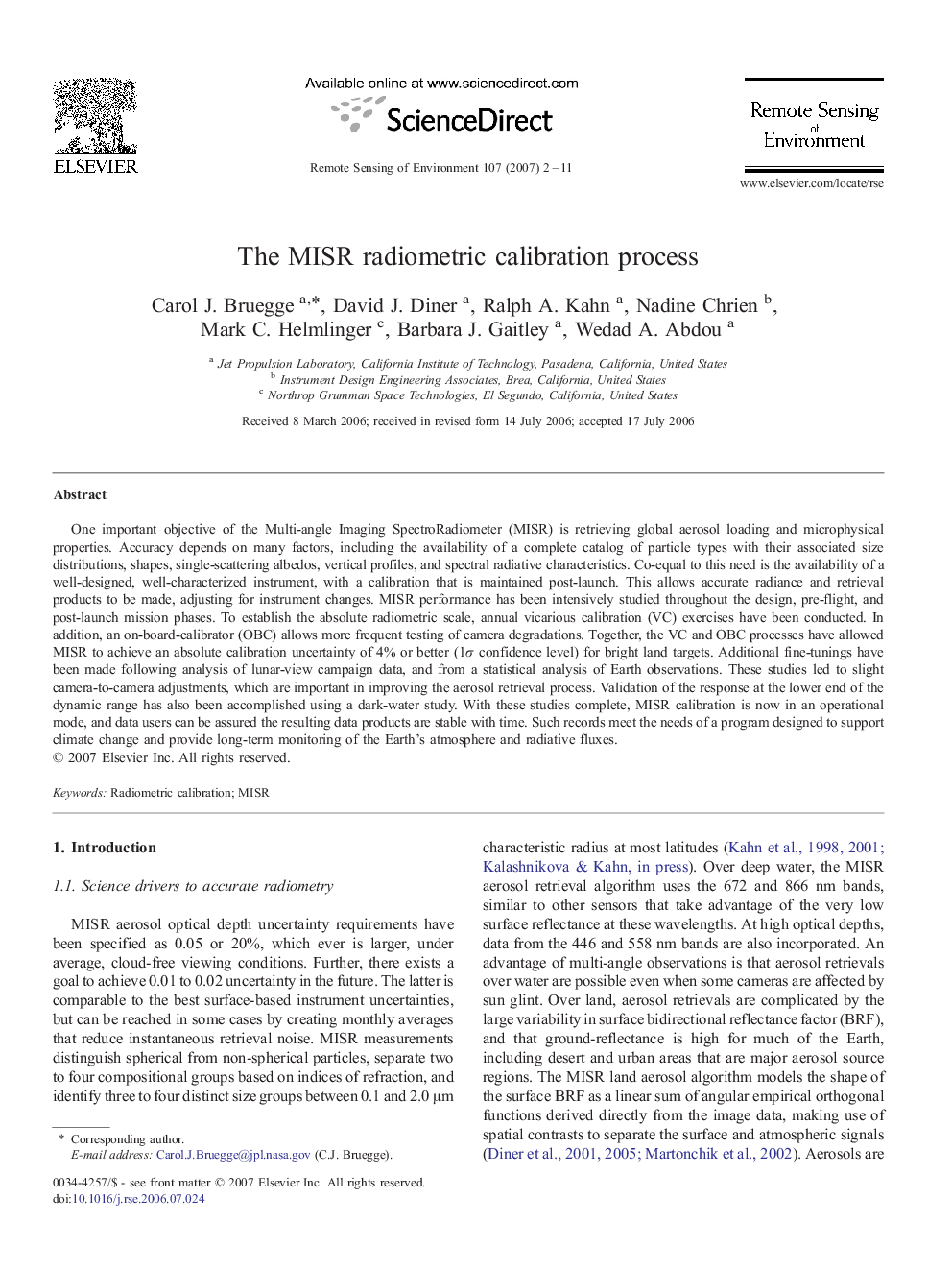| Article ID | Journal | Published Year | Pages | File Type |
|---|---|---|---|---|
| 4460786 | Remote Sensing of Environment | 2007 | 10 Pages |
One important objective of the Multi-angle Imaging SpectroRadiometer (MISR) is retrieving global aerosol loading and microphysical properties. Accuracy depends on many factors, including the availability of a complete catalog of particle types with their associated size distributions, shapes, single-scattering albedos, vertical profiles, and spectral radiative characteristics. Co-equal to this need is the availability of a well-designed, well-characterized instrument, with a calibration that is maintained post-launch. This allows accurate radiance and retrieval products to be made, adjusting for instrument changes. MISR performance has been intensively studied throughout the design, pre-flight, and post-launch mission phases. To establish the absolute radiometric scale, annual vicarious calibration (VC) exercises have been conducted. In addition, an on-board-calibrator (OBC) allows more frequent testing of camera degradations. Together, the VC and OBC processes have allowed MISR to achieve an absolute calibration uncertainty of 4% or better (1σ confidence level) for bright land targets. Additional fine-tunings have been made following analysis of lunar-view campaign data, and from a statistical analysis of Earth observations. These studies led to slight camera-to-camera adjustments, which are important in improving the aerosol retrieval process. Validation of the response at the lower end of the dynamic range has also been accomplished using a dark-water study. With these studies complete, MISR calibration is now in an operational mode, and data users can be assured the resulting data products are stable with time. Such records meet the needs of a program designed to support climate change and provide long-term monitoring of the Earth's atmosphere and radiative fluxes.
